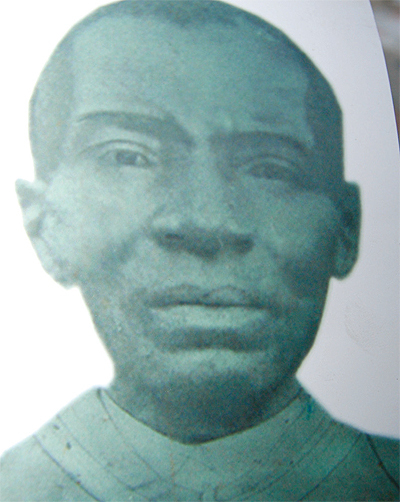He missed being a martyr
Dennis Kamyuka, is one of the many people who narrowly escaped Kabaka Mwanga’s mass execution.
Dennis Kamyuka, is one of the many people who narrowly escaped Kabaka Mwanga’s mass execution of his Christian pages, the event that is internationally remembered today as Uganda Martyr’s Day. He lived to see his martyred colleagues beatified and canonised in Rome. Juliet Lukwago looks at Dennis Kamyuka’s story through the eyes of his village mates.
On October 18, 1964 in St. Peter’s Basilica in Rome, Pope Paul VI canonized as saints the 22 Catholic pages murdered by Kabaka Mwanga. Forty-seven years before that, Pope Benedict XV had declared them martyrs on June 6, 1920. Dennis Kamyuka was present on both occasions and was able to testify as a witness to what had happened at the gruesome execution of the pages, for he himself had been one of them.
Kamyuka was one of the few who survived the fire at the last minute.
Lucky to be alive, he nonetheless felt a loss at having missed the honour of becoming a canonised saint in the Roman Catholic Church. He lived to be over 90 years.
His people’s saint
For the residents of Buseesa in Kibaale district where Kamyuka was born, the fact that he survived martyrdom does not matter. They still want him to be declared a saint too.
In Buseesa the villagers claim that though their grandfather Kamyuka died in 1982, they pray through him and he still performs miracles for them. He remained true to his faith and even on the day of his death, Kamyuka went to church as usual before he breathed his last at night, according to Mzee John Nyakatura, 95, one of the oldest residents.
 Nyakatura adds: “He rode his bicycle every day from Buseesa to Bujuni Parish to attend morning mass. He was a smart man, respectable, friendly and a father to everybody.” Their little village has become a tourist attraction where faithful followers go for private pilgrimage.
Nyakatura adds: “He rode his bicycle every day from Buseesa to Bujuni Parish to attend morning mass. He was a smart man, respectable, friendly and a father to everybody.” Their little village has become a tourist attraction where faithful followers go for private pilgrimage.Line of fire
Kamyuka was a chamberlain to the princess royal and had become a Christian of the Catholic faith.
During that time, Charles Lwanga baptised four promising catechumen — Mugagga-Lubowa, Kizito, Mbaga- Tuzinde and Gyaviira. Kamyuka narrated how the head page, Charles Lwanga took the young Kizito in hand from the private courts. Followed by others Athanasius Bazzekuketta, Achilles Kiwanuka, Gonzaga Gonza, Adolph Ludigo, Ambrose Kibuuka, Mbaga Tuzinde, Gyaviira, Mugagga Lubowa, Bwewussa, Simeon Sebutta, Mwafu (the prime minister’s son Mukasa), Ngapi and two Protestants Nasibu (the Kabaka’s tailor) and Byakutunga (in-charge of the royal hearth).
Kamyuka used to be in the company of the bandsman and guard to Mwanga, Bruno Serunkuma.
Kamyuka revealed that the irritated Kabaka called all the pages to his house. Led by Charles Lwanga, one by one, they prostrated before the Kabaka and sat alongside their leader.
Mwanga accused them of disobeying him. He then ordered them to move to the fence.
Nyakatura recollects that Kamyuka told him that Sebuggwawo, one of the martyrs, was locked outside and faced death at dawn on May 26, 1886. Kamyuka was among various pages marked for execution at Namugongo and on the fateful day they made the long march to Namugongo.
While being led away, Princess Nassiwa tried to ransom Kamyuka in vain. He was eventually spared by Kabaka Mwanga because it was alleged that he was a relative of one of Mwanga’s wives. He was also considered to be too weak for the death penalty.
Set for death
Kamyuka stated how the executioners; heads adorned in animal skin and feathers, smeared mud and soot on their bodies.
They had amulets and bells on their ankles. In the morning, the prisoners staged a scene, joyfully greeting each group that joined them. The peak of the joyous moment came when Mbaga-Tuzinde arriving between two guards, encouraged the other pages to rejoice for this would be credited to their faith. Their joyful ululations left the executioners in wonder.
Kamyuka remembered the executioners gathered around their victims brandishing their spears, pangas and beating drums.
They tied their hands at the back and the chief executioner, Mukajanga, ordered them to march to the fi re. Rolled within reed mats, Kizito the youngest martyr, Gyaviira and Mugagga were the fi rst to be placed on the fi re and others followed.
He says Mukajanga made a last attempt to save Mbaga-Tuzinde but failed. Out of kindness, he ordered the guards to hit Mbaga-Tuzinde on the head before placing his body on the fi re.
Also clubbed were Daniel Nakabandwa, Kizza and Alexander Kadoko (the chamberlain to the princess royal), before they were put on the fi re. Three times the fire ran out of wood and they added more until all were burnt to ashes.
Kamyuka told his people about otherswho he knew survived martyrdom. He named Weerabe, Ssebuta, Bulirwadda, Aliwata and Ntutuno who were reprieved by the Kabaka and also went to Rome to attend the canonisation and give an account of the martyrdom. They all shed tears for having missed being declared saints.
Other survivors
According to Fr. Joseph Mukasa Muwonge, the promoter of Uganda Martyrs in Kampala Archdiocese, more than 10 pages survived execution. These included Matthew Kisule, a gunsmith who was saved because of his specialised knowledge.
His home, still at Wakaliga-Nateete, was a hideout for fugitive Christians.
Alex Ssebowa the chief of Katabazi was spared by Katikkiro Mukasa while Nyonyintono was re-instated as majordomo.
Joseph Mingisiira, Isaac Kajame the twin brother of the martyr Denis Sebuggwawo and another convert called Lwanga were kept in prison for two years until Kabaka Mwanga was deposed, thus they escaped execution.